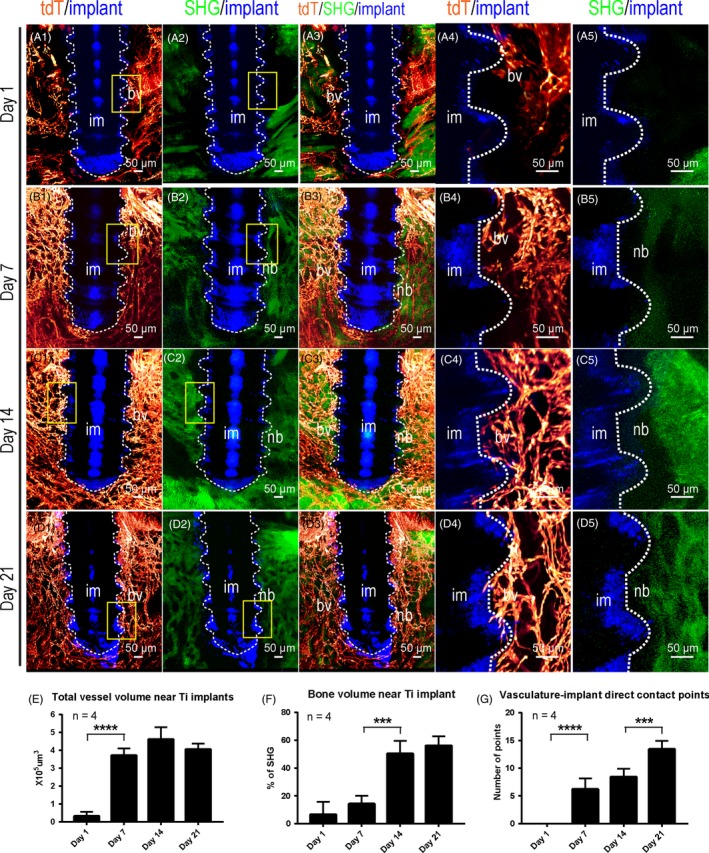Figure 4.

Three‐dimensional analysis indicates the progressive angiogenesis and osteogenesis on the surface of titanium implants during the osseointegration process. Adult Cdh5‐CreERT2; Ai4 mice (2 mo of age) were used for titanium implant placement. Samples cleared with decalcified polyethylene glycol (PEG)‐associated solvent system method were imaged with a two‐photon microscope. Optical stacks of 150 μm thickness were acquired to demonstrate blood vessels (tdTomato, red) surrounding the interface between implant (reflection image, blue) and mandible bone (second harmonic generation, green). A1‐A3, Images were acquired with 10× objective 1 d after implant placement. A4‐A5, Boxed areas in A1 and A2 were re‐imaged with a 25× objective. A1‐A3, Images were acquired with 10× objective 1 wk after implant placement. B4‐B5, Boxed areas in B1 and B2 were re‐imaged with a 25× objective. C1‐C3, Images were acquired with 10× objective 2 wk after implant placement. C4‐C5, Boxed areas in C1 and C2 were re‐imaged with a 25× objective. D1‐D3, Images were acquired with 10× objective 3 wk after implant placement. D4‐D5, Boxed areas in D1 and D2 were re‐imaged with a 25× objective. E, Total blood vessels volumes in a 150 × 150 × 150 μm image stack near the implant surface at different time points were quantified, n = 4. F, Percentiles of bone tissue volume in a 150 × 150 × 150 μm image stack near the implant surface at different time points were quantified, n = 4. G, Numbers of direct contact points between the implant and blood vessels at various time points were quantified, n = 4. Scale bars, 100 μm. bv, blood vessels; im, implant; nb, new bone
